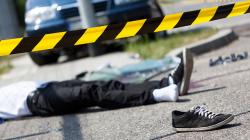 Most of the time, if you’ve been in a collision, the other party stays put so that you can exchange insurance information and wait for police or emergency services if there is a dispute or injury.
Most of the time, if you’ve been in a collision, the other party stays put so that you can exchange insurance information and wait for police or emergency services if there is a dispute or injury.
But on occasion, the other driver flees the scene, leaving you likely frazzled and scrambling. If you carry uninsured driver’s coverage, the costs will be covered by your insurer. However, there things you should and shouldn’t do if you’ve been involved in a hit-and-run accident.
Whatever you do, do not follow or chase the fleeing driver. If you also leave the scene, you may miss out on gathering eye-witness accounts of the accident. The police may also question who is really at fault.
Also, chasing down the other driver puts you at risk of having a violent confrontation.
Sometimes the fleeing driver may have a reason to flee the scene, such as an outstanding arrest warrant or perhaps they were breaking other laws when the accident occurred, like transporting drugs or driving while drunk.
Here’s what to do:
1. First, get as much information as you can about the vehicle that hit you, such as:
– Model and make
– Color
– License plate number
– The direction the other vehicle was headed when the driver fled.
2. Call the police and file a report. The official accident report will help police look for the missing driver, and will also be useful when you file your accident claim.
3. Next, try to find witnesses and ask for their names and contact information. Ask them if they can supply additional information about the accident. If they give you or the police a statement, be sure to get their names and contact details.
4. Write down the time and location of the accident.
5. Take pictures of the accident scene.
6. Take pictures of your car and all the damage, especially if another vehicle’s paint is visible on it.
7. This will help you prove that you are not attempting to defraud your insurance company.
8. Call your insurance company and report the claim.
Insurance coverage
To make sure that your insurer will pay to fix the damage caused by an uninsured driver, you need to carry uninsured motorist coverage as part of your policy. The benefits are as follows:
• Uninsured motorist bodily injury coverage pays for medical expenses.
• Uninsured motorist property damage covers car repairs.